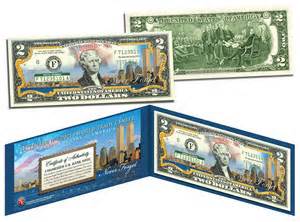If you’ve been involved in copywriting for any length of time, you’re painfully aware of how challenging it can be to grab the attention of your desired readers.
Once you succeed there, you still have an intimidating uphill climb ahead of you. It takes hard work to keep that attention, channel desire, and close the sale.
You may have heard it said that marketers and salespeople without a system for selling are at the mercy of the prospect’s system for not buying.
A million thoughts and emotions scream for attention. Distractions seem to pop up at least once a minute. Then there’s the ever-present resistance to “being sold.” Like I said, your copy has a tough uphill battle.
But what if you could leverage the mind’s strength against itself, much like a judo master redirects the force of an opponent?
Let’s briefly consider 5 points of psychological leverage you can use in your copy. Each can strengthen your persuasive power by causing forces already active in the mind to overcome its own resistance.
1. Self-Perception
The most important factor in the buying decision is how people categorize themselves. The way they think about themselves and their place in the world affects everything they do.
To a tremendous degree, they choose products, services, and brands because of how they tie into their perception of themselves. That applies to both how they see themselves now, and how they hope to see themselves in the future.
For example, how many millions of dollars does Nike make selling equipment to people who are athletes? How many more millions do they earn from those who dream of being athletes?
Find out how your customers identify themselves. Use the insights you gain from that research to make your business and your offers more relevant to customers.
Develop serious rapport instantly by connecting with who your prospects and customers really consider themselves to be.
2. Belief
Gary Bencivenga said, “Almost everyone in the world, in every field of human endeavor, is desperately searching for someone to believe in. Be that person, and you can write your own ticket.
“Belief is today’s most overlooked yet most powerful key to boosting response to any ad, in any medium. Harness it and you unleash the core atomic power for exploding response. Because the hunger for belief is so vast in every market, so deep-seated in human nature itself, you can tap into it again and again — infinitely — to make yourself and your clients rich.”
Actually be trustworthy. Then present yourself or client to your prospects and customers as an individual or business with integrity. Never abuse their trust. Never give the impression that you’d deceive them.
Finally, build whatever credibility you can, and exploit it to the fullest. Experience, education, endorsements, etc. They all make you more believable.
3. Mental/Emotional Momentum
We hear it said all the time, but you can never hear it too much: good copy, good advertising, good sales pitches all enter into the conversation that the audience already has going on inside their minds.
Hitch a ride on a train that’s already in motion. Grab onto a motivator your reader is already being driven by. The stronger the motivator, the better.
Which do you think is going to get better results: adding another voice to the noisy cafeteria of your customer’s mind, or talking with him about something he’s already thinking about, caring about, and ready to do something about?
4. Curiosity
Claude Hopkins mentions in Scientific Advertising that curiosity is one of the strongest human incentives. Once it’s been aroused, we can hardly sleep until we satisfy that curiosity.
How can you add curiosity to your business, product, or service? To your marketing message?
5. Likeability
People like to do business with people they like. I’m sure you know of instances where the only reason people continue to hire less-than-ideal service providers is that they have good relationships with them.
When customers like you, barriers are removed, doors are opened, and everyone feels good about the process.
Personality is of the utmost importance when attempting to be likeable in print. No one enjoys stuffy, emotionless, impersonal wording.
Write until it sounds as if you were talking directly to one of your prospects. Be yourself. Don’t manufacture a personality. Sounding contrived can be worse than being boring.
Even great copywriters in hot markets convert less than minor league baseball players. In many cases, you’re getting legendary results if you can close 5 sales from 100 leads.
That’s why I encourage you to stop fighting against potential customers and simply use their mental and emotional momentum to get the results you want.
Kinda like judo…





